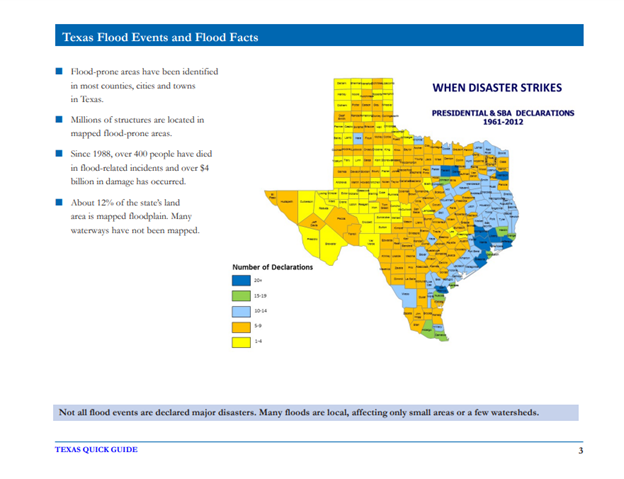Flood Maps by Address and Helpful Info for Texans

Knowing where your home stands in terms of flooding is important. Flood maps can help you best prepare for the worst, but the reality of the situation is that all Texans need to understand that the risk persists no matter where your home is located. Either way, searching flood maps by address is one of the many powerful tools homeowners and renters alike have available to help them remain ready against one of nature’s harshest disasters.
Search Flood Maps by Address in Texas
When you flood maps by address, you can pinpoint your exact property and understand the risks around it. For some Texans, flooding is a larger threat than others and even within particular regions or cities, things can change.
For example, a home that is in League City, TX, but closer to the Gulf of Mexico and nearby waterways will be at a higher risk than homes located west of I-45.
Either way, flood insurance in Texas is an important protection when you consider as many as 25% of all flood-related claims come from homes outside of high-risk areas. Nevertheless, understanding where you stand in regard to flood zones in Texas is still important.
ArcGIS Online provides an interactive flood map using cutting-edge tools and sophisticated data. Its Texas A&M FEMA Flood Zones Map can help homeowners accurately find out exactly where their homes stand
Flooding in Texas is a growing problem and it’s not just the newsworthy, eye-catching historical events such as Hurricane Harvey. Every day flooding threats can destroy your home, vehicles, and property. Staying protected helps offset these risks.
Where Are the Floods in Texas?

*Image Source: Texas Water Development Board
Understanding where flooding occurs in Texas means getting familiar with what causes floods in the Lone Star State. You’ll find flood threats in virtually every region of the state, but for differing reasons:
Weather Patterns
More natural disasters occur in Texas than in any other state and when it comes to flooding, there are plenty of events to contend with:
- Severe thunderstorms can contribute to massive amounts of rain all at once. Texas is also home to Flash Flood Alley, the place most likely to experience a flash flood in North America. This region encompasses Central Texas extending from Dallas through Uvalde.
- Southeast and East Texas will also contend with flooding due to similar weather patterns, however, also enduring tropical storms and hurricanes as well.
In addition to these trends, there has been a noted change in the amount of precipitation Texans face. According to the U.S. Environmental Protection Agency (EPA), Texas is getting wetter as annual rainfall continues to increase.
Anyone can see that more rain is going to mean an increase in the amount of flooding an area receives. In the same sense, such changes can also lead to the threat of flooding in Texas on a more frequent basis.
Proximity to Water Sources
Texas has had to create lakes and work diligently to provide water sources for its residents, but those initiatives have paid off. Unfortunately, water sources may be necessary, but they also cause flooding hazards. Areas closer to water sources are at a higher risk of flooding.
These characteristics can often go hand-in-hand with weather patterns as the weather can affect the capacity and activity within water sources.
Extensive rains can cause lakes and rivers to overflow. Floods can also appear in both city and rural areas if too much rain pours down at once. Furthermore, if your home is located near the Gulf of Mexico, storm surges and climate change continue to add to the threat of flooding.
An Increasing Population
Texas is the fastest-growing state in the U.S. by numeric growth, and this increase in population is causing flooding. The reason? More people means the need for more development and more construction means urban areas are finding fewer and fewer places for water runoff.
This results in flooding and while urban centers are highly affected, suburban and rural areas continue to face similar problems due to construction.
Landscapes are changing and as concrete replaces natural areas, cities big and small are finding themselves needing new solutions to offset flash flooding due to routine storms and widespread flooding during major weather events.
Overall, these factors affect everyone to some degree but affect some Texans more than others. These are the places most affected by the factors leading to floods in Texas:
- Urban centers are affected more than rural homes. Specifically those throughout North-Central, Central, and Southeast Texas.
- Homes located near water sources are at risk. River basins & reservoirs along with the coastline of the Gulf of Mexico put homes at increased threat. Prominent examples of water sources in Texas include the Brazos River, Colorado River, Trinity River, Neches River, Sabine River, Rio Grande River, and the Gulf of Mexico, among others.
- Any city, town, or region growing and experiencing new construction. Again, while these primarily include major cities, smaller cities are also experiencing these issues as populations increase throughout the Lone Star State.
What Cities in Texas Are Affected by Flooding?
There are large sections of Texas that are highly affected by flooding, as evidenced by the factors listed above. But it’s worth noting that of the top 10 metro areas in the Lone Star State, nine are in areas heavily affected by floods in Texas:
- Houston
- Austin
- San Antonio
- Dallas
- Fort Worth
- Arlington
- Corpus Christi
- Irving
- Plano
This is because an overwhelming amount of the population in Texas can be found either near the coast or in Flash Flood Alley. But no matter where you live, flooding can pose a threat to your home and property. Having flood insurance in Texas is essential for staying protected.
Tips for Texans When Reading Flood Maps by Address
If you’re new to reading a Texas flood zone map, it can feel a bit daunting. Thankfully, it doesn’t have to be such a challenge with these great tips. Understanding flood zones in a Texas map will help you better understand your surroundings and make decisions accordingly:
There Are 18 Flood Zones on FEMA Flood Maps
Your FEMA flood map can show as many as 18 flood zones. Each zone falls into one of three categories: high-risk, low-to-moderate risk, and undetermined risk. Here’s how they breakdown:
High-Risk:
- Flood zone A
- Flood zone AO
- Flood zone AH
- Flood zones A1-A30
- Flood zone AE
- Flood zone A99
- Flood zone AR
- Flood zone AR/AE
- Flood zone AR/AO.
- Flood zone AR/A1-A3
- Flood zone AR/A
- Flood zone V
- Flood zone VE
- Flood zones V1-V30
Low-to-Moderate Risk:
- Flood zone B
- Flood zone C
- Flood zone X
Undetermined Risk:
- Flood zone D
*Note: Flood zone D does not mean there isn’t a risk of flooding, simply that it has yet to be mapped. As with any flood zone, having flood insurance is always advised to protect yourself from losses.
Keep Your Wits About You With Landmarks
Looking at grids does no good if you don’t know where you are or what you’re viewing. Taking note of landmarks in relation to the scale of your map can help you better identify your desired location on the map.
Refer to Your Legend as Well
Speaking of your map’s scale, you’ll want to take advantage of the legend. Here, you can find the scale of the map, important water boundaries, and flood zones. Altogether, these tools will help you read a FEMA flood map much easier.
Is Flood Zone X Good or Bad?
Flood zone X, also called flood zone X500, is known to be the best flood zone designation a homeowner can receive. This is because the property is located outside the 500-year floodplain all while receiving protection from the 100-year floodplain from a dam or levee.
Does this mean that you’ll never experience a flood? Absolutely not. But it does mean that your chances of experiencing flooding in Texas are lower than anyone else. Remember, 500-year floodplains and all floodplains are based on the probability of a flood, but the possibility always exists.
What Is Flood Zone AE in Texas?
Flood zone AE is one of many designations indicating high-risk flood zones. This term is being used to replace other designations, including Flood zones A, AO, AH, and A1-A30. If your home is in such flood zones, you can expect higher insurance rates for protecting your property. This includes auto insurance.
Flood Maps by Address and Other Resources for Staying Protected

If you’re conducting due diligence about where your home is located, you’re already on the right track, but having the right insurance coverage in place is necessary to see yourself through. This is because home insurance, while important, won’t cover a flood claim. Here are a few key considerations:
- A standard home insurance policy (HO-3) does cover water damage that is sudden and accidental but excludes flood damage.
- Flood insurance is offered by both government and private insurers. This means more options for you and affordable coverage.
- It’s often thought about what will happen to homeowners, but renters need protection too. Sadly, your personal property isn’t covered by flooding with just a renter’s insurance policy.
- Finally, protecting your home and personal items may come to mind, but don’t forget about your vehicle. If you have liability coverage alone or are lacking the right coverage to protect from flooding, you’ll have to restore such losses on your own. In order to protect your vehicle from flood damage, you’ll need to enroll in comprehensive insurance.
It’s important to have the right coverage but it’s also crucial to enroll with the right company. Freedom Insurance Group is here to help, offering insurance products from a wide range of carriers.
Our agents help you find the right policies to protect you against flooding and the many other perils you might face. Because we have partnerships with over 25 top-rated insurance providers, we can compare your rates and find the cheapest option for your needs without cutting protection.
All providers view the risks involved with your property, including the flood zones. But that doesn’t mean everyone looks at these risks the same. One brand might weigh the risk of flooding to be severe while others may not view it as so much of a risk.
This is why you need to compare your rates among many different brands to ensure you always get the best deal. We can even look for discounts involving bundling home, auto, and flood coverages to be sure you gain more protection for less.
From providing our clients with resources such as the ability to search flood maps by address to deliver an average savings of 40%, and even helping them file claims, we’re here to serve. Contact us for a flood, home, or auto quote today!






